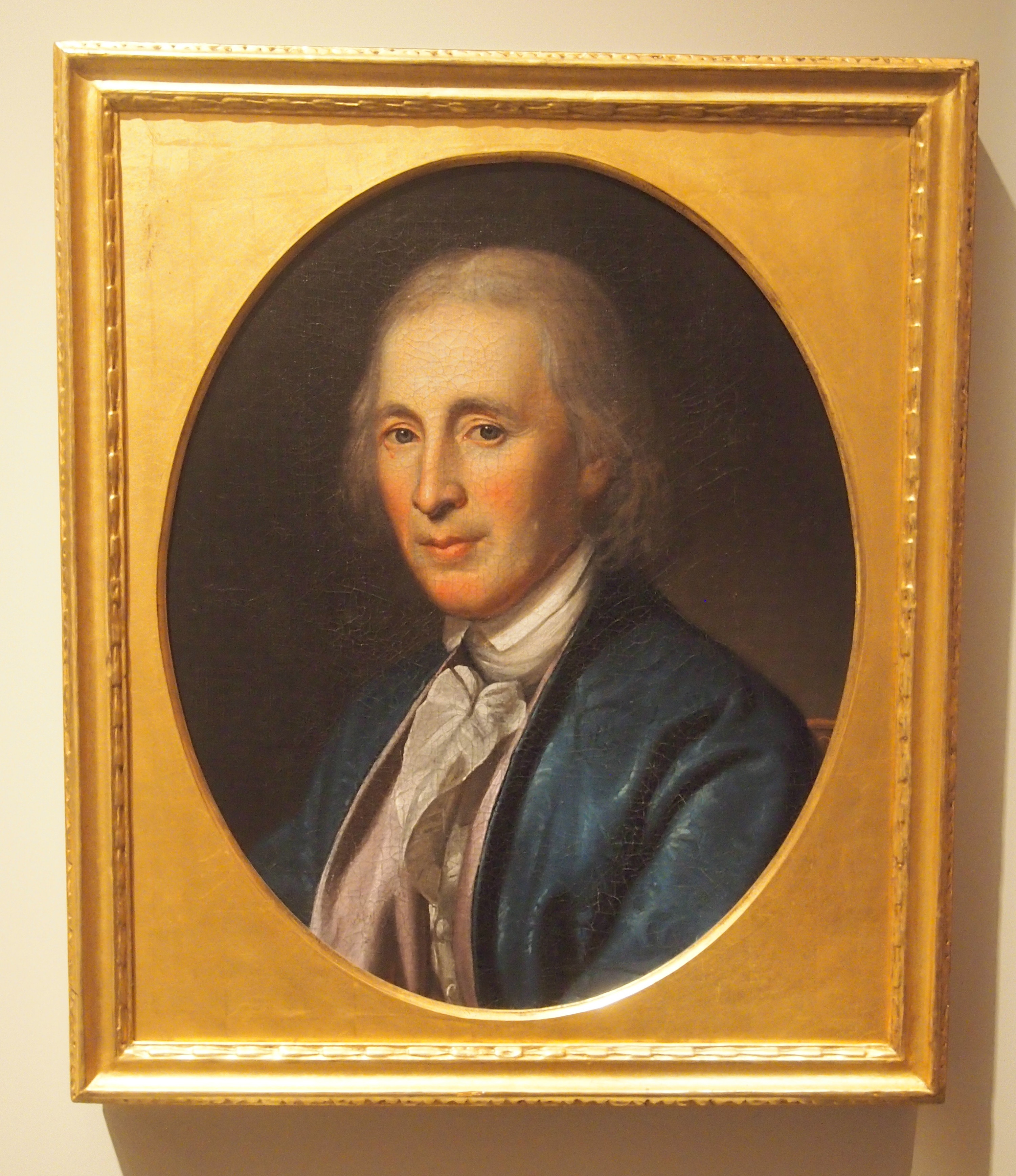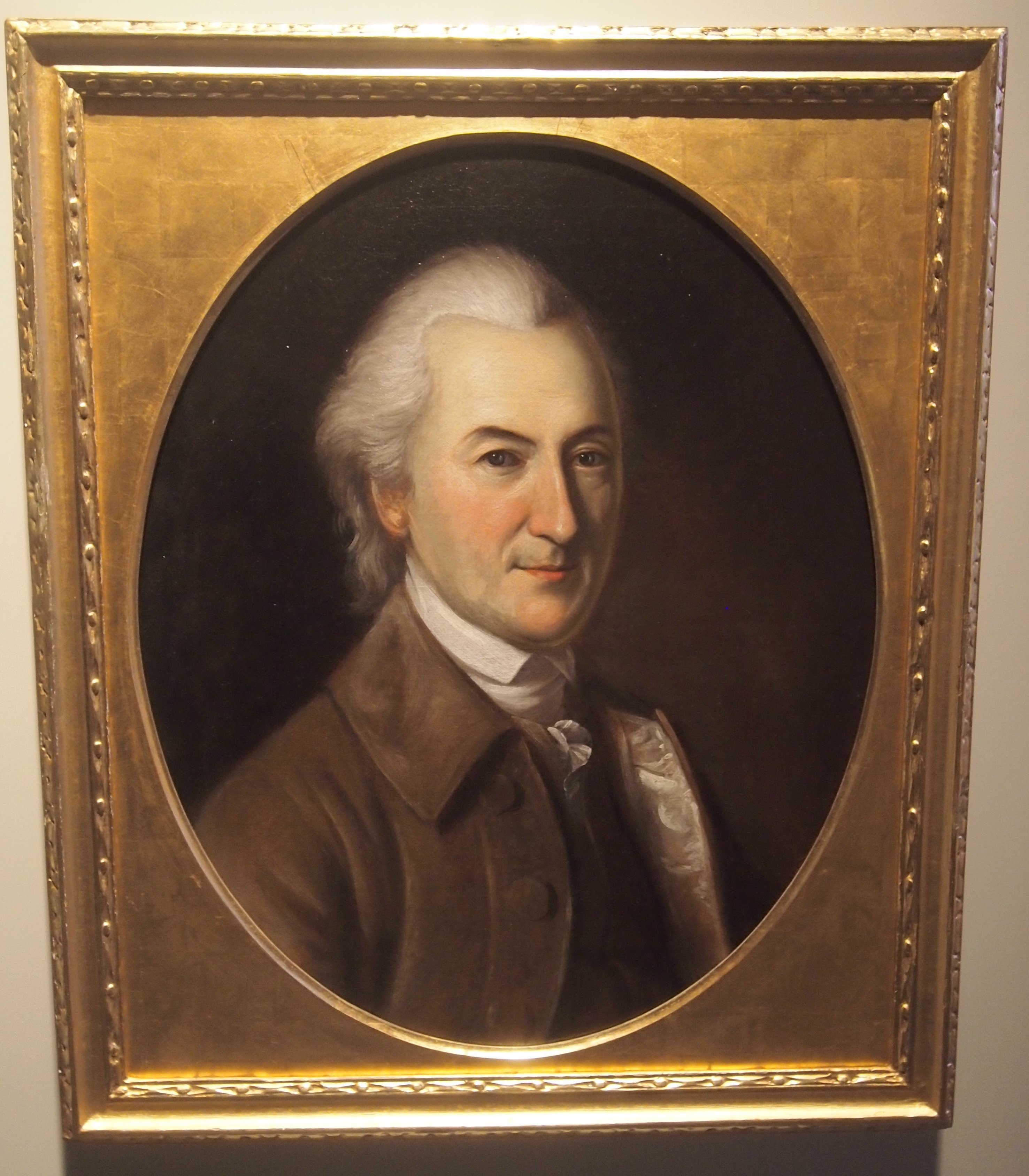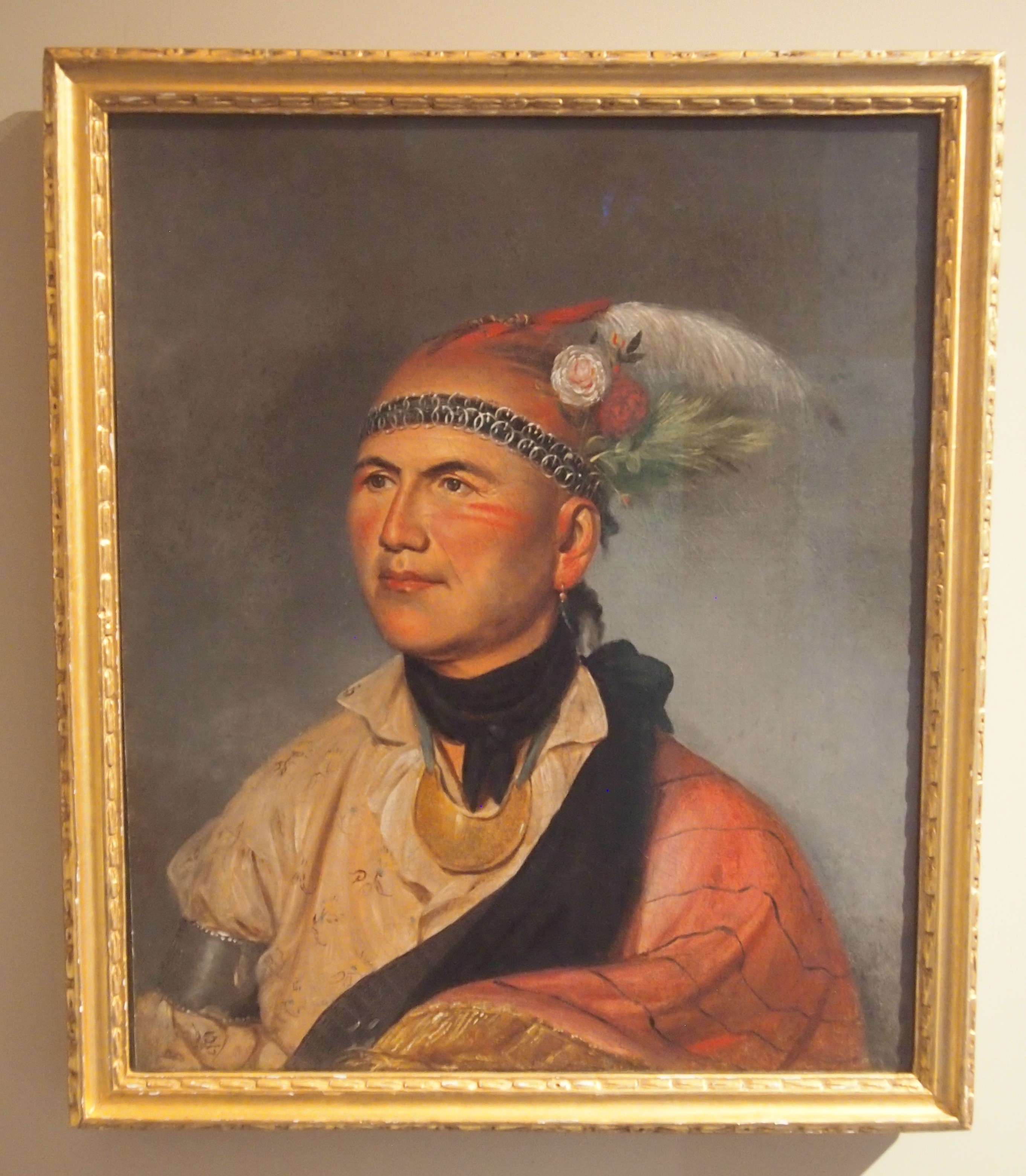Unusually warm these last few days. Today was so pleasant I cooked brats outside and we ate them outside for lunch. More leaves are gone than not, so for the moment there’s a mismatch between temperature and foliage, for this part of the country. It’s certain not to last.
The Second Bank of the United States is at 420 Chestnut St. in Philadelphia, just two blocks from Independence Hall. The gallery was as sparsely visited on October 22, a Saturday, as Independence Hall and the Liberty Bell were overrun by visitors. It’s the bank that President Jackson famously slew with a veto of its re-chartering in the summer of 1832, an act that was the focus of the election that fall — which Jackson won resoundingly.
The building is a handsome, bank-as-Greek temple sort of structure designed by William Strickland. Him again. I hadn’t realized he was so prominent in Philadelphia, since I’ve long associated him with Nashville. These days, the building is known as the Portrait Gallery in the Second Bank of the United States, displaying many portraits of Revolutionary and post-Revolutionary luminaries.
That includes a large collection of paintings by Charles Willson Peale, whom I didn’t appreciate until looking at one portrait of his after another. The man had some serious talent for portraiture, and much else besides.
I spent time especially with lesser-known figures of the period, though I didn’t see Button Gwinnett. The nation may have just heard of that Declaration signer from Georgia, but I did a report on him in the 8th grade, when we had to do reports on signers (picked at random, I think). I remember him, because his name is hard to forget.
All of the portrait examples from the Second Bank of the United States posted here were painted by Peale. The Founding Fathers are always worthwhile to ponder, but a lot of other interesting people characterized the period. David Rittenhouse, for instance.
Talk about a lesser-known man of the Enlightenment. Of special interest to me is that he was a skilled astronomer — one of those worldwide who observed the Transit of Venus in 1769 — and first director of the U.S. Mint. Not only that, he built swell orreries and surveyed borders for mid-Atlantic states, including the half-circle border between Pennsylvania and Delaware.
“His scientific thinking and experimentation earned Rittenhouse considerable intellectual prestige in America and in Europe,” says the Penn University Archives & Records Center. “He built his own observatory at his father’s farm in Norriton, outside of Philadelphia. Rittenhouse maintained detailed records of his observations and published a number of important works on astronomy, including a paper putting forth his solution for locating the place of a planet in its orbit.
“He was a leader in the scientific community’s observance of the transit of Venus in 1769, which won him broad acclaim. He also sought to solve mathematical problems, publishing his first mathematical paper in 1792, an effort to determine the period of a pendulum. He also experimented with magnetism and electricity.”
Here’s John Dickinson, who didn’t support the Declaration. Later, though, he did his part for independence, and was a delegate in 1787.
“On July 1, 1776, as his colleagues in the Continental Congress prepared to declare independence from Britain, Dickinson offered a resounding dissent,” says HistoryNet.
“Deathly pale and thin as a rail, the celebrated Pennsylvania Farmer chided his fellow delegates for daring to ‘brave the storm in a skiff made of paper.’ He argued that France and Spain might be tempted to attack rather than support an independent American nation.
“He also noted that many differences among the colonies had yet to be resolved and could lead to civil war. When Congress adopted a nearly unanimous resolution the next day to sever ties with Britain, Dickinson abstained from the vote, knowing full well that he had delivered ‘the finishing Blow to my once too great, and my Integrity considered, now too diminish’d Popularity.’ ”
Here’s a nice dramatization of that moment from John Adams, with Dickinson portrayed by Zeljko Ivanek.
This is Thayendanegea, also known as Joseph Brant, a Mohawk war chief who was decidedly not on the side of the colonists during the Revolution.
He was pro-British in the war, in that it served the interests of the Iroquois Confederation. Awfully even-handed of the gallery to include him, though it’s good to acknowledge his leadership skills, which apparently were many in war and diplomacy.
“The Mohawks chose to support the British because American colonists were already overrunning their lands,” says Upper Canada History. “The alliance was not unnatural as far as the Natives were concerned. For more than a hundred years, the Iroquois League had allied itself with the British in their long conflict with the Algonquins. Brant, Mohawk chief, had fought alongside the British in the Seven Years’ War and he remained loyal to the redcoats. This new alliance was really just a continuance of their long-standing cooperation…
“Brant fought with fierce determination against the Americans on the frontier and distinguished himself as one of their most courageous warriors and ablest strategists. His contribution to the cause did not go unrewarded. Of Brant’s loyalty and leadership, Lord Germain wrote, ‘The astounding activity of Joseph Brant’s enterprises and the important consequences with which they have attended give him a claim to every mark of our regard.’ In 1779 Brant received a commission signed by the king as ‘captain of the Northern Confederate Indians’ in appreciation of his ‘astonishing activity and success’ in the king’s service. Even though he esteemed his rank as captain, he preferred to fight as a war chief.”
After the Americans won the war, Thayendanegea led his people to Canada, with mixed results. He’s regarded highly enough in Canada to have been on a proof silver dollar in 2007, the bicentennial of his death.


